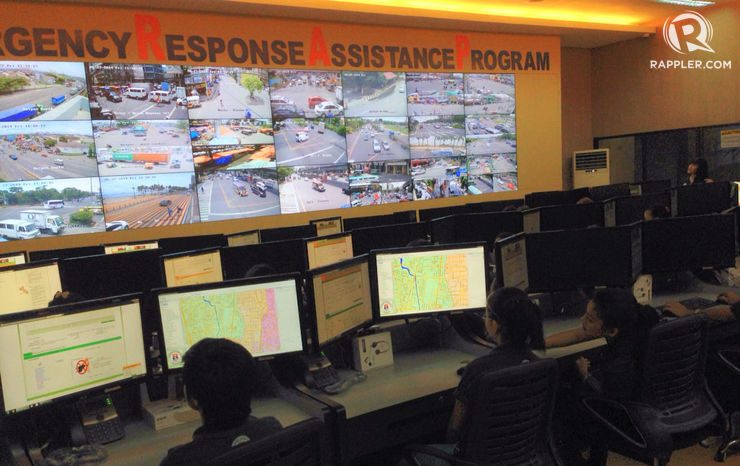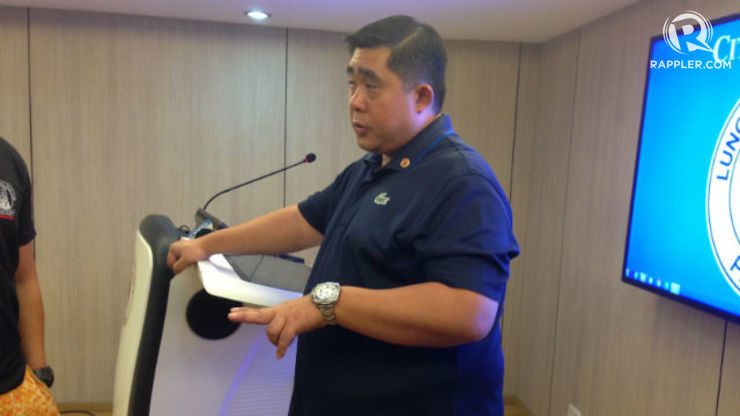SUMMARY
This is AI generated summarization, which may have errors. For context, always refer to the full article.

MANILA, Philippines – Preparing for the “worst” possible natural hazard that could hit them, the city of Manila announced Friday, June 27, that it will conduct a city-wide earthquake drill for the first time to test the city’s disaster mitigation and response systems.
The drill, set on Wednesday, July 2, will highlight two worst case disaster scenarios: the movement of the West Valley Fault, and the movement of the Manila Trench.
According to Manila Mayor Joseph Estrada, the drill will serve as a reminder for Manila residents to always be prepared.
“It’s very important to always remind the public of what they should do in case a calamity strikes. Whether it be typhoons, floods, or earthquakes, we need to ensure the people’s safety,” Estrada said in Filipino.
The exercises will be based on the result of the Metro Manila Earthquake Impact Reduction Study (MMEIRS) – conducted by the Japan International Cooperation Agency (JICA) – that a magnitude 7.2-earthquake scenario that will hit Metro Manila if the West Valley Fault system moves.
Based on the study, about 40% of the residential buildings in Metro Manila will be heavily or partially damaged. Hundreds of thousands will suffer injury and die, the study suggested.
On Wednesday evening, June 25, a magnitude 5.7 earthquake with a depth of 36 kilometers struck in in Calatagan, Batangas. Tremors were felt in the National Capital Region as far as central Luzon. No damage from the quake, which was tectonic in origin, was reported.
Two scenarios

According Johnny Yu, Manila Disaster Risk Reduction and Management (DRRM) officer-in-charge, the first scenario, to be conducted in the morning, will include an earthquake, a fire, and road traffic accidents involving hazardous materials.
“Based on our own hazard mapping, if the 7.2-magnitude earthquake strikes, Manila will experience an intensity 8 earthquake,” Yu said.
Yu added that an intensity 8 earthquake in Manila meant 300,000 possible collapsed structures and 500,000 casualties, including dead, missing, and injured residents. “This was from 2000 to 2004. It’s 2014 now so we’re expecting twice or thrice the damage.”
The second scenario, to be held in the afternoon, will include an earthquake and tsunami emergency, brought by the movement of the Manila trench.
Based on the data presented by JICA and the Philippine Institute of Volcanology and Seismology (Phivolcs), a movement in the Manila trench could create tsunami waves 3.5 (low tide) to 5.5 (high tide) meters high that would reach Manila.
Once the alert is released, residents and responders will be given one hour to evacuate and move to higher grounds.
“We’re creating a worst case scenario using our disaster imagination. We have imagine the worse that can happen. If we’re ready for the worse, we’ll be prepared no matter what calamity (hits) us,” Yu said.
All hands on deck
Around 70% of the establishments in Manila – hotels, schools, hospitals, government offices, etc – are expected to participate in the drill.
The main response exercise will happen in Roxas Boulevard, from TM Kalaw to Quirino Avenue. The area will be closed to traffic.
Yu said the drill will check whether all the participating establishments and communities have the mandatory disaster and contingency plans.
“The communities have no excuse for not having any local DRRM plans as we’ve already provided them with all the hazard and risk maps they need,” Yu said.
The drill will also test the city’s coordination with national agencies. Officials and responders from the Office of Civil Defense (OCD) and the National Disaster Risk Reduction and Management Council (NDRRMC) will serve as evaluators of the entire drill.
“I know that this exercise will be really difficult to implement but we need to do this so we can test our capability and see the loopholes and gaps in our system,” Yu said.
The city-wide drill kicks off Manila’s efforts for the National Disaster Consciousness Month of July. – Rappler.com
Manila is a Project Agos partner.
Add a comment
How does this make you feel?
There are no comments yet. Add your comment to start the conversation.